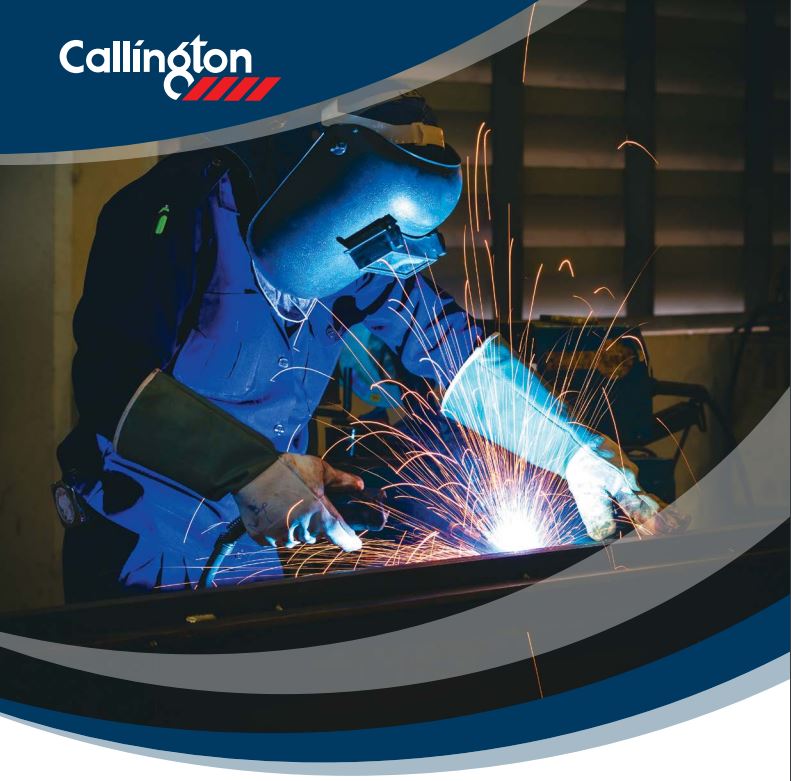Callington are a leading specialty chemicals manufacturer and provide specialty chemicals to aviation and industry. Aitken Welding Supplies are proud to be associated with this internationally recognised brand. See their range of metal working fluids here. Call us on 1800 AITKEN for pricing and availability!
https://www.callingtonhaven.com/metal-working-fluids.php
Metal fabricators and part manufacturers in the welding industry demand efficiency and cost-effective processes. Ensuring the correct pre-welding & post-welding metal surface treatment procedures are being utilised can contribute to saving valuable time and money.
During the Singapore Welding Society Conference in August 2019, industry experts Bob Middleton from Callington Australia and Atila Ruiz from Callington Singapore delivered a technical presentation on managing weld spatter & post welding surface treatments of stainless steel. Both theoretical knowledge and procedure processes were very well received by the audience. Information presented at the conference were;
Pre-Welding Surface Treatment
The application of anti-spatter protection is an important component of the pre-welding process. Ensuring the correct application method has been adopted can save metal fabricators and part manufacturers time and money. The anti-spatter protection is applied to the base material substrate during welding and the components of the welding torch. The build-up of weld spatter within the nozzle can restrict gas flow and cause poor weld quality that requires rework. Physically removing weld spatter with chisels or tools from the welding nozzle can damage and deform the welding nozzle, resulting in restricted or poor gas delivery. When Callington anti-spatter protection is used, the weld spatter can easily be removed without damaging the torch components and enhances welding productivity to ensure longer life of torch components.
The Callington range of anti-spatter solutions are non-flammable, contain no silicon and have low surface tension, when purchasing a reliable and good anti-spatter these are the most important attributes to consider. The products listed below are available in aerosols or bulk containers with a portable trigger pack.
- CalGuard Anti-Spatter – water-based anti-spatter
- S-Weld Spatter Guard – solvent-based anti-spatter
- CalGaurd Nozzle Dip – wax nozzle dip gel

Post-Welding Surface Treatment
Selecting either to Pickle or to Passivate is essential at various life stages in preserving stainless steel. ASTM A380/380M, the standard practice for cleaning, descaling, passivation of stainless steel, parts, equipment and systems and ASTM A967/967M, the standard specification for chemical passivation treatment for stainless steel parts are useful references when developing post-welding surface treatment procedures.
Callington’s pickling technology is more likely to be used during stainless steel fabrication. Pickling removes surface contamination, welding heat tint, and restores the depleted chromium layer (Passive Layer) that was damaged while welding. Heat tint tarnish on the stainless steel surface prevents oxygen from reaching the material and prevents the passive protective layer from forming. If the heat tint is not removed it reduces the corrosion resistance of the stainless steel.
The passivation process will not remove the heat tint created during the welding process, it helps to promote the restoration and integrity of the passive film (Passive Layer) on freshly created surfaces. It also dissolves any free iron contamination created during handling and fabrication. Restoration of the passive layer is completed by the passivation process. If treated correctly stainless steel will become auto-passive within 24 hours.
Passivation will spontaneously form a chemically inactive surface when exposed to air or other oxygen-containing environments. It was once considered that an oxidising treatment was necessary to establish passive film, although it is now accepted that this film will form spontaneously in an oxygen-rich environment providing that the surface has been thoroughly cleaned and descaled.
The Callington range of Pickling & Passivation Solutions are;

